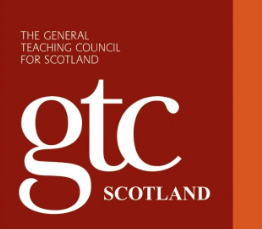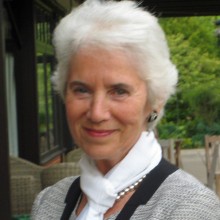Audit of skills, knowledge and personal attributes
Rate yourself (1=Not very well developed; 3=very well developed)
| Skills and Abilities |
1 |
2 |
3 |
| Self Confidence |
|
x |
|
| Contributing to Discussions |
|
|
x |
| Generate New Ideas |
|
|
x |
| Computing Skills |
|
x |
|
| Build Social Networks |
|
|
x |
| Set Personal Goals |
|
|
x |
| Take Notes |
|
|
x |
| Team Work |
|
|
x |
| Take Risks |
|
x |
|
| Recognition |
Reflection |
Action |
| Skills already developed |
How will I use these |
How do I know (evidence)** |
| Contributing to Discussions |
When having team meetings where advertising ideas will be discussed |
When you feel confident enough about an idea and can put it forward within in the group. |
| Generate New Ideas |
For this placement new ideas are generated everyday in ways to draw in customers for the client we’re working for (e/g/ Pizza Hut or T Mobile) |
When I think of a unique idea |
| Set Personal Goals |
When I am working towards my presentation. |
When I achieve the goal. |
| Build Social Networks |
When working with the team in and out of the office to ensure I am not working alone and contributing well to the team’s effort. |
When I have the confidence knowing who is the best person to get in contact with. |
| Team Work |
I will use the skills I gained on placement. I worked with those in my class (both pupils and teachers) and other members of staff. This will also be the case with Tracy Locke where each team will need to collaborate. |
|
|
|
|
Knowledge:
As stated in my first post, marketing and advertising is not an industry I know a lot about, hence why I have chosen Tracy Locke so I can learn about the work and the professionalism in the workplace.
Personal Attributes:
I would describe myself as someone who is approachable, patient and friendly. I am extremely (maybe too) organised and punctual. I believe these are attributes that are key when becoming a teacher. However, these characteristics are things that can be transferred to any workplace. These will put be in good stead when arriving at Tracy Locke and prove myself as someone who will be a good asset to the team.
Integrity:
It is important to make a good connection between personal and professional attitudes to bring about change in practice. I believe that a positive personal attitude is vital in developing a positive professional attitude. When going into my own class I believe that a positive outlook on the day will have a good impact on my professional attitudes and ensure everyday in the classroom is exciting for all of my pupils. For this placement I feel I must go in each day with a positive outlook on what the outcome of the day will be as everyday is a new day. The team I will be working with are going to be very busy with deadlines and this will allow me to ensure that a positive personal and professional attitude should be maintained at all times to ensure that the task I am working on will be completed to the best standard it can be.
Professional Commitment
I am undertaking this placement as this is an industry I would really like to know more about. I believe this contributes to my lifelong learning I will be taught new things everyday. I believe my choice of advertising will be a good choice as this is something that really does influence our children and the decisions they make on a daily basis. It appears in the HWB section of the Es and Os (HWB 1-37a and HWB 2-37a) so is something that I will have to teach to a number of pupils over the years. I also think it demonstrates my professionalism as I am going out of my comfort zone which is something I will have to do as a teacher when teaching subjects I am not as confident in, such as science.
During this placement I will demonstrate my professional responsibility for the development of the placement through the use of blog posts which will demonstrate what I’ve been learning while I am here and how my own professional attitudes have developed.
Reflection on experiences to date
Since starting university in September 2015 I have been given a variety of experiences that will help me in both my future career as a teacher and life outside of the classroom. These experiences are all going to come in handy for my Learning from Life placement.
My MA1 placement taught me so much more than I possibly thought it could have. it showed me how a classroom should be organised, how to manage behaviour and the importance of planning everything in a lesson.
My MA1 placement has also given me skills which I am able to use in more contexts than just the classroom. For example, this placement allowed me to enhance my skills in professionalism. I was working with a variety of different people everyday including teachers in the school, visiting professionals, pupils and parents. From this I had to develop a more professional language and be approachable at all times. This is a skill I will be able to apply to Learning from Life as I will be working with a variety of different people each day in a professional context.
In addition to this, my MA1 placement allowed me to have very good time keeping. I was always in school early and allowed myself to run lessons on time. This will benefit me in this placement as I will be able to work to time slots that I’m given and be able to complete the work in a professional manner.
Although not academic, since first year at university I have been in the Dundee University Scottish Nationalist Society and I am now a committee member. The experiences I’ve had within the society have allowed me to develop my social skills and from this I have been able to meet new people, help organise events and meet local MSPs and MPs. This has also improved my self confidence in speaking to new people.
During my time in high school I undertook a variety of work experience placements in primary schools from 4th to 6h year which proved to me that teaching was the career path I wanted to follow.
Identification of skills and knowledge to be developed
Self confidence: Self confidence is something that I do have, however, I would like it to be developed just a little bit more. I think that during this placement I will be able to develop this due to meeting a variety of new people everyday and travelling to different places. This will make me more comfortable and more willing to speak to more people in a confident and professional manner.
Computing Skills: I never chose to study any computing subject throughout my time at high school so feel as though I am not very skilled in this subject area. From undertaking this placement I will be using Microsoft Office and email every day and this will allow me to learn and develop skills in ICT.
Taking Risks: As one of my risk taking abilities I have chosen to do my placement abroad. This shows my eagerness for independence and my interest in new culture and a new way of living. This placement will help me with taking risks as I do not know a lot about marketing and advertising.
Identification of learning opportunities
Tracy Locke:
- While with Tracy Locke this will teach me about the marketing and advertising industry. Throughout my time here I will be working with Lauren Cohen (Group
 Account Director at Tracy Locke). The main client she works with is Pizza Hut. Through working with Lauren this will give me the opportunity to travel and experience a client meeting where I will see why certain companies want their products advertised and marketed a certain way.
Account Director at Tracy Locke). The main client she works with is Pizza Hut. Through working with Lauren this will give me the opportunity to travel and experience a client meeting where I will see why certain companies want their products advertised and marketed a certain way.
- I will also get to see how marketing and advertising affects everyday life and how it influences people in wider society.
- Additionally, I will be able to see professionalism in a different work place other than education. This will allow me to learn about how working in this kind of industry affects workers lives in comparison to teaching. (SPR regarding professional commitment states that as student teachers must:
- Engaging with all aspects of professional practice and working collegiately with all members of our educational communities with enthusiasm, adaptability and constructive criticality.
- Committing to lifelong enquiry, learning, professional development and leadership as core aspects of professionalism and collaborative practice.
Huron Valley Roman Catholic Elementary School:
- This will be a fantastic opportunity to learn about and compare education systems and curriculums in America, Michigan, to
 CfE in Scotland.
CfE in Scotland.
- This will give me the chance to continue my teaching practice where I will undertake lessons on marketing and advertising using the knowledge and skills I have gained on my previous part of the placement.
Marcus Graham Project:
- This is going to be the most eye opening part of my Learning from Life placement. Through communication with Tracy Locke CEO this may seem a “culture shock”.
 This will give me to opportunity to learn about life in an American High School. I will also be able to compare the education there to my own secondary education.
This will give me to opportunity to learn about life in an American High School. I will also be able to compare the education there to my own secondary education.
The marketing and advertising industry is quite mono cultural so the aim of the project is to get teenagers from all background interested and involved in the industry.
Record of planning and organisation
For this placement I was lucky enough to know the CEO of Tracy Locke which allowed me to plan and organise this placement. The planning and organisation included Skype calls where we would discuss what I would be doing on placement and when I arrive in Dallas I will meet the team I will be working with who will direct me on what projects and tasks I will be taking part in.
 Grace Darling. She saved 18 people’s lives at sea off the coast of Bamburgh, Northumberland on one of the Farne Islands at just 22 years old. She was the first woman to be awarded for bravery by the RNLI. She is a heroine of her time.
Grace Darling. She saved 18 people’s lives at sea off the coast of Bamburgh, Northumberland on one of the Farne Islands at just 22 years old. She was the first woman to be awarded for bravery by the RNLI. She is a heroine of her time.


 Glenagnes Road the tenements do have some local value as they are made from stone which was a different and new material to use in Dundee at the time.
Glenagnes Road the tenements do have some local value as they are made from stone which was a different and new material to use in Dundee at the time.
 also let me see how involved the parents are with the school as without them we
also let me see how involved the parents are with the school as without them we
 and inspiring learners.” Although I was not teaching to school pupils, I was teaching adults about Scotland and how different it is to America. After my presentation so many people said they wanted to visit the country and i believed my presentation inspired them to do this. People also asked me questions to do with the presentation but also things I hadn’t included such as bands and musicians, which I believe motivated the listeners to dig deeper into what they knew and wanted to know about Scotland.
and inspiring learners.” Although I was not teaching to school pupils, I was teaching adults about Scotland and how different it is to America. After my presentation so many people said they wanted to visit the country and i believed my presentation inspired them to do this. People also asked me questions to do with the presentation but also things I hadn’t included such as bands and musicians, which I believe motivated the listeners to dig deeper into what they knew and wanted to know about Scotland.




 device would this be done on?
device would this be done on? to help them. I met with Aaron who told me the work and research I’d done was utterly fantastic. He’d said that in the past they had hired interns who wouldn’t have produced the standard of work I had so this was a complete confidence boost for myself! I am so glad that the work I had done for them is something that would benefit them for their future work, too.
to help them. I met with Aaron who told me the work and research I’d done was utterly fantastic. He’d said that in the past they had hired interns who wouldn’t have produced the standard of work I had so this was a complete confidence boost for myself! I am so glad that the work I had done for them is something that would benefit them for their future work, too.









 on this piece.
on this piece.






 workplace than a school I will be able to teach my pupils about real world issues that marketing and advertising faces and how it affects us too.
workplace than a school I will be able to teach my pupils about real world issues that marketing and advertising faces and how it affects us too. professionalism and collaborative practice.”
professionalism and collaborative practice.” There are small things such as being able to sing along to the jingle of an advert or knowing the company’s tagline. But, advertising definitely leads to “Mum, can I get that?” to which my mum would normally reply “sure, if you have the money,” which I never normally did.
There are small things such as being able to sing along to the jingle of an advert or knowing the company’s tagline. But, advertising definitely leads to “Mum, can I get that?” to which my mum would normally reply “sure, if you have the money,” which I never normally did. age have a large purchase influence and can successfully negotiate purchases through what advertisers call the “nag factor” or “pester power” (McNeal, 1999). From this, children will continue to ask, want and get foods that they see on television and around them in supermarkets and, therefore, this will contribute to childhood obesity if parents choose to “give in”.
age have a large purchase influence and can successfully negotiate purchases through what advertisers call the “nag factor” or “pester power” (McNeal, 1999). From this, children will continue to ask, want and get foods that they see on television and around them in supermarkets and, therefore, this will contribute to childhood obesity if parents choose to “give in”.





 HutLovers. I looked through all the email promotions from the year so far and put each banner onto a KeyNote presentation which she will use for her future work.
HutLovers. I looked through all the email promotions from the year so far and put each banner onto a KeyNote presentation which she will use for her future work.


































 always remember being that child who was sat beside a pupil, who I always thought, was smarter than me and felt I needed to look at their answers just so I didn’t get in trouble for not completing the work or having too many wrong answers. Of course this was not the case. The teacher I had would always give me the support I needed- it was just a fear of being embarrassed that I always seemed to have.
always remember being that child who was sat beside a pupil, who I always thought, was smarter than me and felt I needed to look at their answers just so I didn’t get in trouble for not completing the work or having too many wrong answers. Of course this was not the case. The teacher I had would always give me the support I needed- it was just a fear of being embarrassed that I always seemed to have. were put into groups to try and get a good understanding of the term. So, Hannah Gibson, Kathleen Mullen, Michelle Mackie and I have written a report on our findings.
were put into groups to try and get a good understanding of the term. So, Hannah Gibson, Kathleen Mullen, Michelle Mackie and I have written a report on our findings.
 application process. This experience was one which was wanted by so many, so I was honoured to be one of the two chosen and I am now a Holocaust Ambassador for the Trust. I feel that writing this post today is very important as I want to inform people what I saw and how I felt. My main aim with this is to ensure that people never forget about the Holocaust and we must try our best to learn and teach about the events to ensure something like it will not happen again.
application process. This experience was one which was wanted by so many, so I was honoured to be one of the two chosen and I am now a Holocaust Ambassador for the Trust. I feel that writing this post today is very important as I want to inform people what I saw and how I felt. My main aim with this is to ensure that people never forget about the Holocaust and we must try our best to learn and teach about the events to ensure something like it will not happen again. he thing that struck me most in Eva’s testimony was the fact that no one noticed that Eva’s mother was pregnant until she began to actually give birth. This helps highlight the sheer strength and bravery of her mother. In Eva’s story, all her mother’s family were separated from one another, like many others who lost their lives and loved ones, yet Eva’s testimony helps to highlight that each person involved in the Holocaust was a human being with their own extremely different experience and her story stuck in my mind while we were in the camps. On this day each year I think of Eva as 15 members of her family were murdered in Auschwitz Birkenau.
he thing that struck me most in Eva’s testimony was the fact that no one noticed that Eva’s mother was pregnant until she began to actually give birth. This helps highlight the sheer strength and bravery of her mother. In Eva’s story, all her mother’s family were separated from one another, like many others who lost their lives and loved ones, yet Eva’s testimony helps to highlight that each person involved in the Holocaust was a human being with their own extremely different experience and her story stuck in my mind while we were in the camps. On this day each year I think of Eva as 15 members of her family were murdered in Auschwitz Birkenau.
 Nazis, it made all prisoners seem the same. Though I have given statistics for a lot of the belongings we saw, it is extremely impersonal and through seeing them for myself I know that each prisoner in Auschwitz was their own individual with their own families, friends, homes and backgrounds.
Nazis, it made all prisoners seem the same. Though I have given statistics for a lot of the belongings we saw, it is extremely impersonal and through seeing them for myself I know that each prisoner in Auschwitz was their own individual with their own families, friends, homes and backgrounds.

 cal theatre which is still a huge love of mine. I feel as though I’m a much stronger singer than I am a dancer so I think this is why is preferred this kind of performance and expressive art.
cal theatre which is still a huge love of mine. I feel as though I’m a much stronger singer than I am a dancer so I think this is why is preferred this kind of performance and expressive art.



 o important as a teacher to know as I must be able to relate to pupils and their past.
o important as a teacher to know as I must be able to relate to pupils and their past. d ‘affectionless psychopathy.’ Highlighting that attachment is so serious in the development of a child for the issues that will occur in the rest of their life.
d ‘affectionless psychopathy.’ Highlighting that attachment is so serious in the development of a child for the issues that will occur in the rest of their life. the subject. I felt a sense of confidence I do not usually have when writing an academic piece. I feel that this highlights the positive aspect of feedback. But there was obviously negative feedback too. However, it was helpful and I knew what I needed to do for next time.
the subject. I felt a sense of confidence I do not usually have when writing an academic piece. I feel that this highlights the positive aspect of feedback. But there was obviously negative feedback too. However, it was helpful and I knew what I needed to do for next time.